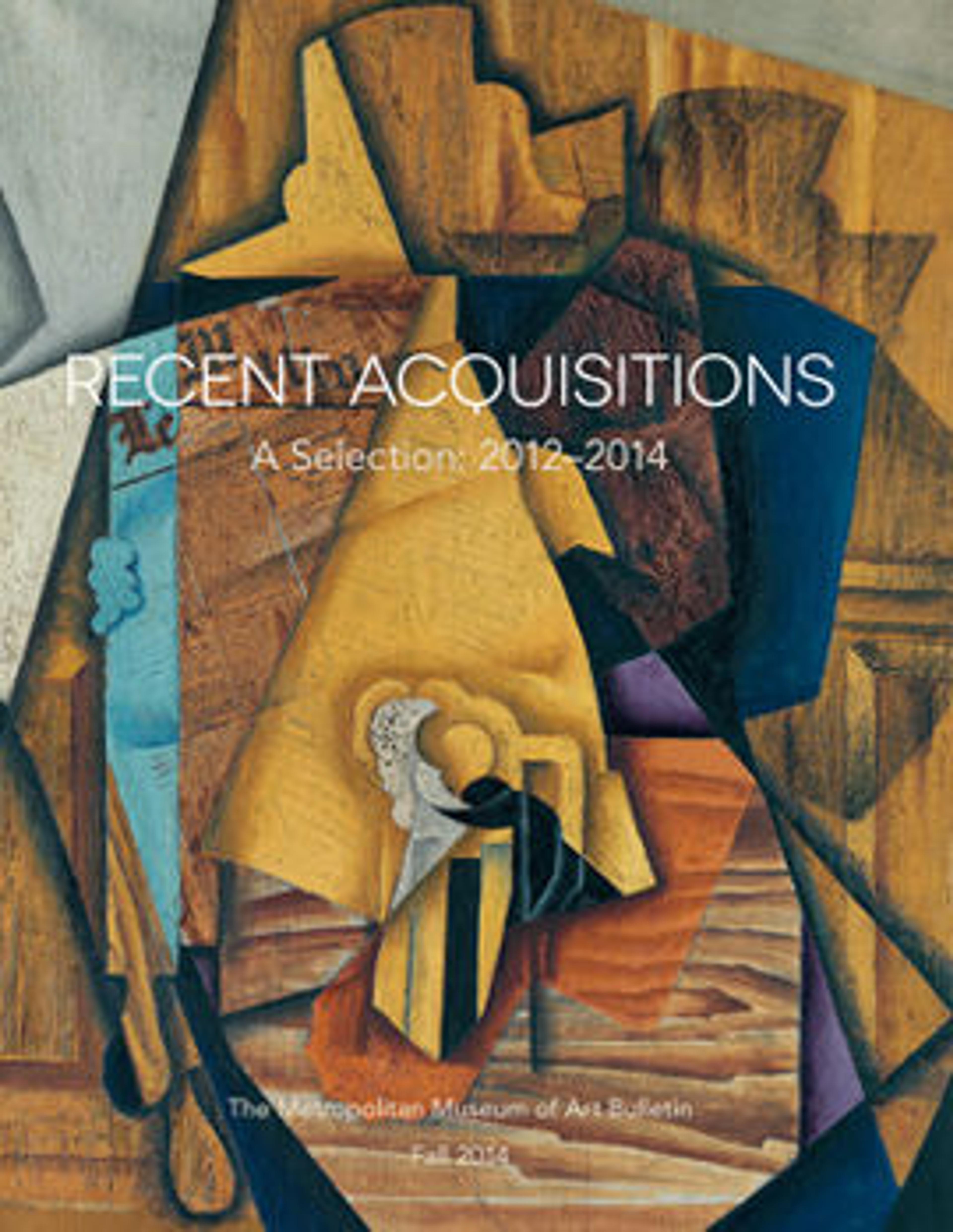Porphyry vessel with bearded masks
Porphyry vessel shaped like a situla but without the two handles above.
Outsplayed rim, with molding decoration and one groove on interior shoulder below rim; low neck with concave profile; narrow shoulder, sloping downwards; cylindrical body with side curving in at bottom; low base with molding decoration and three curving feet around bottom edge; flat bottom with raised central disk; two horizontal ear-shaped handles; below each handle, a Silenus mask. Each Silenus wears a wreath with leaves and berries and a fillet across his forehead; he has pointed ears, projecting forwards, a broad nose, a bushy moustache, parted lips, and long, flowing beard with drilling between the wavy locks.
In antiquity, porphyry was highly regarded as a royal stone, because its color was associated with the regal and, in Roman times, imperial use of purple to symbolize rank and authority. Since the stone is very hard, making its extraction and transport extremely difficult and costly, its use in sculpture and architecture was very limited. This piece, probably used as a cinerary urn, is one of the finest porphyry vessels to have survived from Classical Antiquity. In shape and decoration, especially with the striking masks of Silenus, it resembles bronze situlae but lacks the two handles above. The closest parallel however is provided by the Angers porphyry situla, acquired by King René of Anjou in 1449 from the Convent of St. Paul at Marseille and given by him soon afterwards to the Cathedral of Angers.
Outsplayed rim, with molding decoration and one groove on interior shoulder below rim; low neck with concave profile; narrow shoulder, sloping downwards; cylindrical body with side curving in at bottom; low base with molding decoration and three curving feet around bottom edge; flat bottom with raised central disk; two horizontal ear-shaped handles; below each handle, a Silenus mask. Each Silenus wears a wreath with leaves and berries and a fillet across his forehead; he has pointed ears, projecting forwards, a broad nose, a bushy moustache, parted lips, and long, flowing beard with drilling between the wavy locks.
In antiquity, porphyry was highly regarded as a royal stone, because its color was associated with the regal and, in Roman times, imperial use of purple to symbolize rank and authority. Since the stone is very hard, making its extraction and transport extremely difficult and costly, its use in sculpture and architecture was very limited. This piece, probably used as a cinerary urn, is one of the finest porphyry vessels to have survived from Classical Antiquity. In shape and decoration, especially with the striking masks of Silenus, it resembles bronze situlae but lacks the two handles above. The closest parallel however is provided by the Angers porphyry situla, acquired by King René of Anjou in 1449 from the Convent of St. Paul at Marseille and given by him soon afterwards to the Cathedral of Angers.
Artwork Details
- Title: Porphyry vessel with bearded masks
- Period: Early Imperial
- Date: ca. late 1st century BCE‒early 2nd century CE
- Culture: Roman
- Medium: Porphyry
- Dimensions: 10 1/16 × 11 13/16 × 9 3/4 in. (25.5 × 30 × 24.8 cm)
Diam. of rim: 8 7/8 in. (22.5 cm) - Classification: Miscellaneous-Stone Vases
- Credit Line: Purchase, Acquisitions Fund, The Jaharis Family Foundation Inc. Gift, Philippe de Montebello Fund, Philodoroi and Renée E. and Robert A. Belfer Gifts, The Bothmer Purchase Fund, and Mr. and Mrs. John A. Moran, Nicholas S. Zoullas, Patricia and Marietta Fried, Jeannette and Jonathan Rosen, Aso O. Tavitian, Leon Levy Foundation and Barbara and Donald Tober Gifts, 2014
- Object Number: 2014.215
- Curatorial Department: Greek and Roman Art
More Artwork
Research Resources
The Met provides unparalleled resources for research and welcomes an international community of students and scholars. The Met's Open Access API is where creators and researchers can connect to the The Met collection. Open Access data and public domain images are available for unrestricted commercial and noncommercial use without permission or fee.
To request images under copyright and other restrictions, please use this Image Request form.
Feedback
We continue to research and examine historical and cultural context for objects in The Met collection. If you have comments or questions about this object record, please contact us using the form below. The Museum looks forward to receiving your comments.
